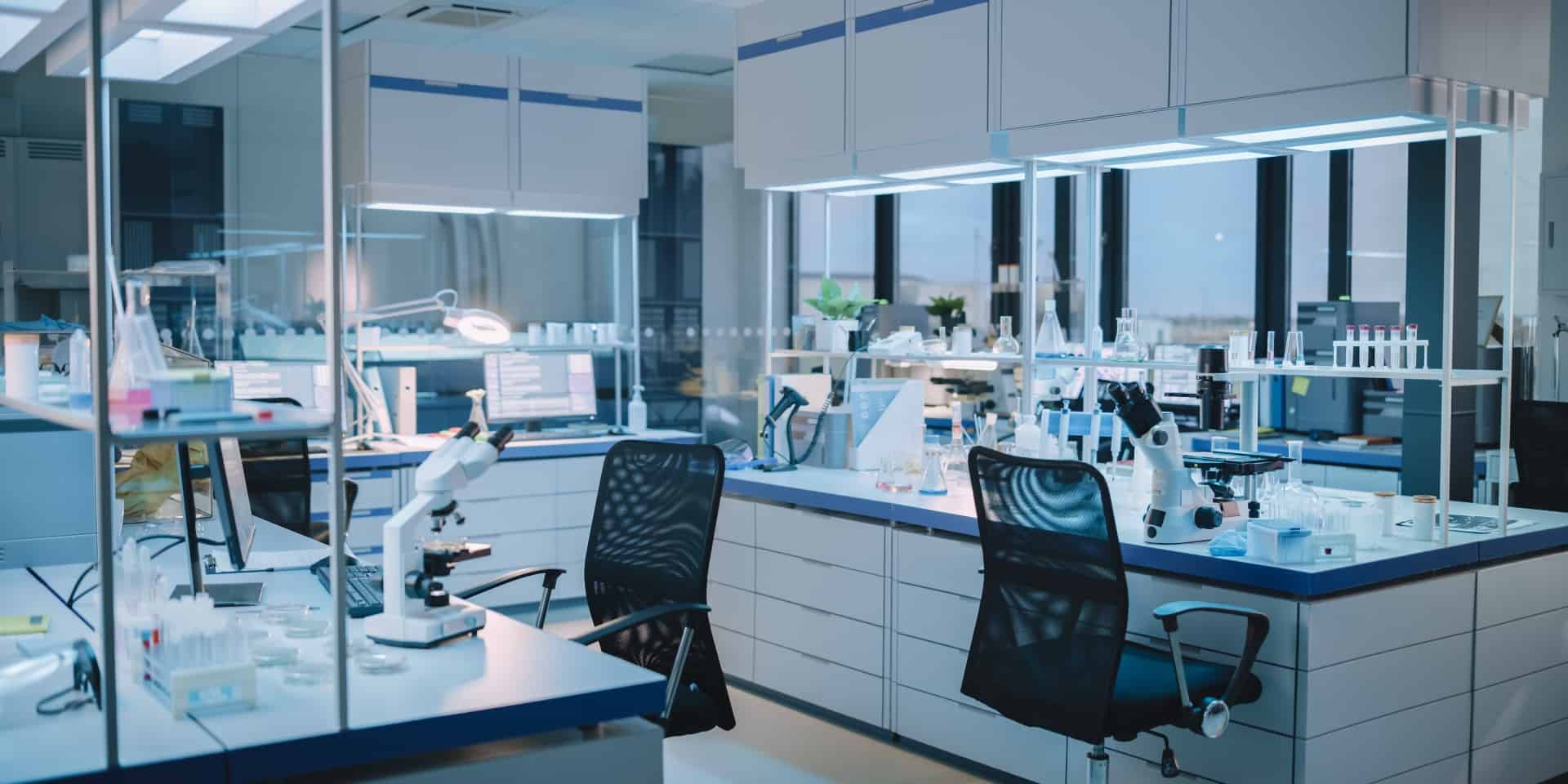10 Lab Design Ideas & Trends for 2025
An office isn’t the only workspace that benefits from thoughtful, efficient design. Lab workflow is equally important in order to avoid potential problems down the road.
In a lab, it’s common for the layout of benches, instrumentation and appliances to occur organically. But there’s room for creativity and innovation — even in a lab!
Analyzing lab workflows and traffic patterns can inform your lab re-design or the layout and organization of a new build — all of which will save time and create a safe and enjoyable environment for your employees.
Let’s explore the latest laboratory design ideas and trends.

1. A Collaborative Layout
No matter the industry, collaboration is on trend with a focus on healthy, productive working relationships among individuals and teams.
An open lab plan with a central cluster of workstations provides teams the opportunity to work together within a single lab space. Team and huddle rooms, conference rooms and demo spaces are increasingly integral spaces in a lab facility, encouraging collaborative meetings and brainstorming.
2. Embracing Flexibility
Many labs have evolving or changing schedules due to different projects and timelines, which means flexibility should be incorporated into the lab’s design, especially if research and development is involved. Think innovations such as modular, easy-to-move benches with connected services such as gas, a vacuum and air delivered by articulated ceiling fixtures that move with the benches. This allows you to create the kind of efficiency and flexible lab space you need.
3. Evolving “Wet Lab” Processes
The rise of miniaturization and automation technologies, along with strides in robotics and computer-generated models and simulations, is already starting to supplement — and in some cases replace — “wet lab” processes. As a result, lab benches can be swapped out for more efficient robotic workstations.
As miniaturization technology like nanoliter assays and microfluidic, chip-based processes increase in availability, a wider range of users will gain access to these technologies, changing the look and feel of lab design.
4. State-of-the-Art Technology
Automation and computerized instruments capable of conducting sequences that once had to be done by hand further reduce the need for individual scientists to have large benches.
Hybrid work solutions, including unified communications strategies, allow for virtual collaboration and remote data analysis. Computers are being downsized to tablets, mobile phones and in some cases, wearable devices. Adding the right technology and flexibility can make lab conditions, observations and measurements more accurate and efficient.
5. Advanced Air Filtration Systems in Lab-Adjacent Spaces
Prior to 2020, lab managers primarily controlled air quality and monitored room environments to prevent cross-contamination.
The COVID-19 pandemic, however, brought additional focus to air quality control in adjacent offices and administrative and common spaces, and this trend is likely here to stay.
Advanced air filtration systems and environmental controls improve air quality, minimize contamination and ensure the health and safety of technicians, scientists, administrative support and management.
6. Continued Emphasis on Health & Safety
COVID-19 created new protocols for nearly every industry — including laboratory research. Labs will continue to prioritize air quality management and emphasize temperature and PPE checkpoints to ensure staff are working in a safe and healthy environment.
7. Specialized Facilities
Many labs require highly regulated cold rooms to accommodate raw materials, thoughtfully designed spaces for storing, packaging and shipping finished products, and creative solutions for chemical storage.
On the opposite side of the spectrum, lab hoteling facilities (spaces with appropriate equipment and technologies for different types of scientific research, as well as spaces with sufficient power, cooling systems and redundancy to operate different styles of research at different times) are becoming popular in new construction and ground-up lab renovation.
8. Attention to Sustainability
Sustainability is an ever-expanding trend. Many companies, including labs, are encouraged to reuse existing buildings and spaces whenever possible.
Other sustainability measures include solar power and energy recovery systems, occupancy/vacancy sensors and elaborate utility control and monitoring systems for the lab spaces to reduce energy consumption in lab spaces and buildings.
In non-research-specific spaces such as team and administrative rooms and offices, sustainability practices can extend toward use of natural light and integration of green spaces.
At the end of the day, your lab does not need to be a boring, bland space. The right design and technology enhancements can transform your environment into an efficient workspace that will also attract and retain employees in today’s competitive marketplace.
To learn more about how to transform your space, contact us at DGI today.
![Laboratory Design Ideas & Trends [2025]](https://www.dgicommunications.com/wp-content/uploads/2022/11/LabDesignFeaturedImage.jpg)
